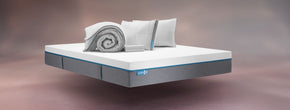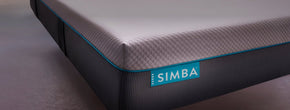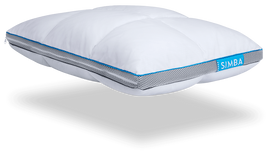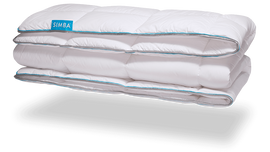At the end of a long day, the sight of a naked duvet in need of a fresh cover is often an eye roll inducing last straw of a chore.
Anyone who’s ever had to make a bed for the first time will know that putting a duvet into a cover isn’t as easy as it looks.
The corners never match up, the duvet gets twisted, if it’s in two layers the poppers can come apart, and bumps and lumps appear all over the place. Ever had to crawl inside in a frustrated attempt to smooth it out the edges?
Rest assured; we’ve all been there - until we learned the hacks that make putting on a duvet cover on a doddle.
When it’s a bigger size than a single duvet, wrestling a cover onto a duvet also requires a certain amount of height, muscle power and wrist strength.
Need to limber up for the duvet Olympics? Not anymore. If you’re wondering, how do I put on a duvet cover?, these simple techniques will not only do the trick, but also take the strain out.
The Inside-Out Method
This tried-and-tested hack will not fail, but it can be a bit of a workout with larger duvet sizes like a King or Super King.
If your arm span is on the smaller side, just do one corner at a time. Sometimes a bit of height can help in shaking the duvet out, so if you need a bit of assistance, grab both corners and stand on one end of the bed, shake it, and use gravity to help pull the cover down.
Alternatively, find a companion to grab the other side and pull the cover down in tandem.
- Lay the duvet flat on the bed
- Turn the duvet cover inside out
- Put your arms into the duvet cover, until your hands reach both corners
- Pick up the two closest corners of the duvet
- Shake the cover down over the duvet
- Turn the duvet so the opening is at the foot of the bed and do up the fastening
The Roll Method
Feeling less energetic? The roll method takes a bit longer than the inside-out trick, but it’s less strenuous overall.
- Turn your duvet cover inside out and lay it neatly on top of the bed with the opening at the foot of the bed
- Lay the duvet on top, making sure that the corners match
- Spend a few minutes aligning the edges and corners
- Take one of the corners at the head of the bed and begin to roll the duvet and cover together, towards the foot of the bed
- Roll it up completely, taking it all the way down to the end, like a long sausage
- Now find the opening of the duvet cover which should be exposed
- Put your hand inside the cover and into one of the corners
- Grab all of the duvet at the end and flip the cover over
- Repeat at the other end
- Now fully unroll it - and voilà! The duvet should magically appear inside the right side of the cover
- Do up the fastening
- Shake to fluff it up
Of course, there are more ways to put on a duvet cover, but these next two styles are more hit-and-miss.
The Ghost
This technique is more suitable for taller builds than smaller, shorter types, and works much like the inside-out method, but instead, you place your whole body inside the duvet cover.
- Lay the duvet flat on the bed
- Turn the cover inside out and put it over your head and body
- Put your hands up to find the corners of the duvet
- Find the corners of the duvet and pull it up
- Shake the duvet cover while holding the corners of the duvet until it’s fully covered
- Do up the fastening
The All-In
The rookie bed-changer usually starts with this method as it’s the most logical, however, it’s the least efficient, and there’s a higher chance that one of the corners will get lost and you’ll have to rummage around inside to find
- Lay the duvet cover, right side out, on the bed
- Put the entire duvet into the cover
- Match the corners of the duvet to the corners of the cover
- Shake it to disperse the duvet evenly
Why use a duvet cover?
A duvet cover protects the duvet from spills and stains, and it is interchangeable, so it can be washed more frequently and easily.
You can also match your duvet cover to the decor of your bedroom and change the material to suit the season (e.g., light cotton for summer, heavier flannel for winter).
Obviously, you don’t have to iron your duvet cover, but it does look and feel nicest when it’s crisp, crease-free and smoothed out.
It’s always best to put the end with the closure (which can be a zip, buttons, or tie fasteners) at the foot of the bed so that you can’t feel it under your chin.


















